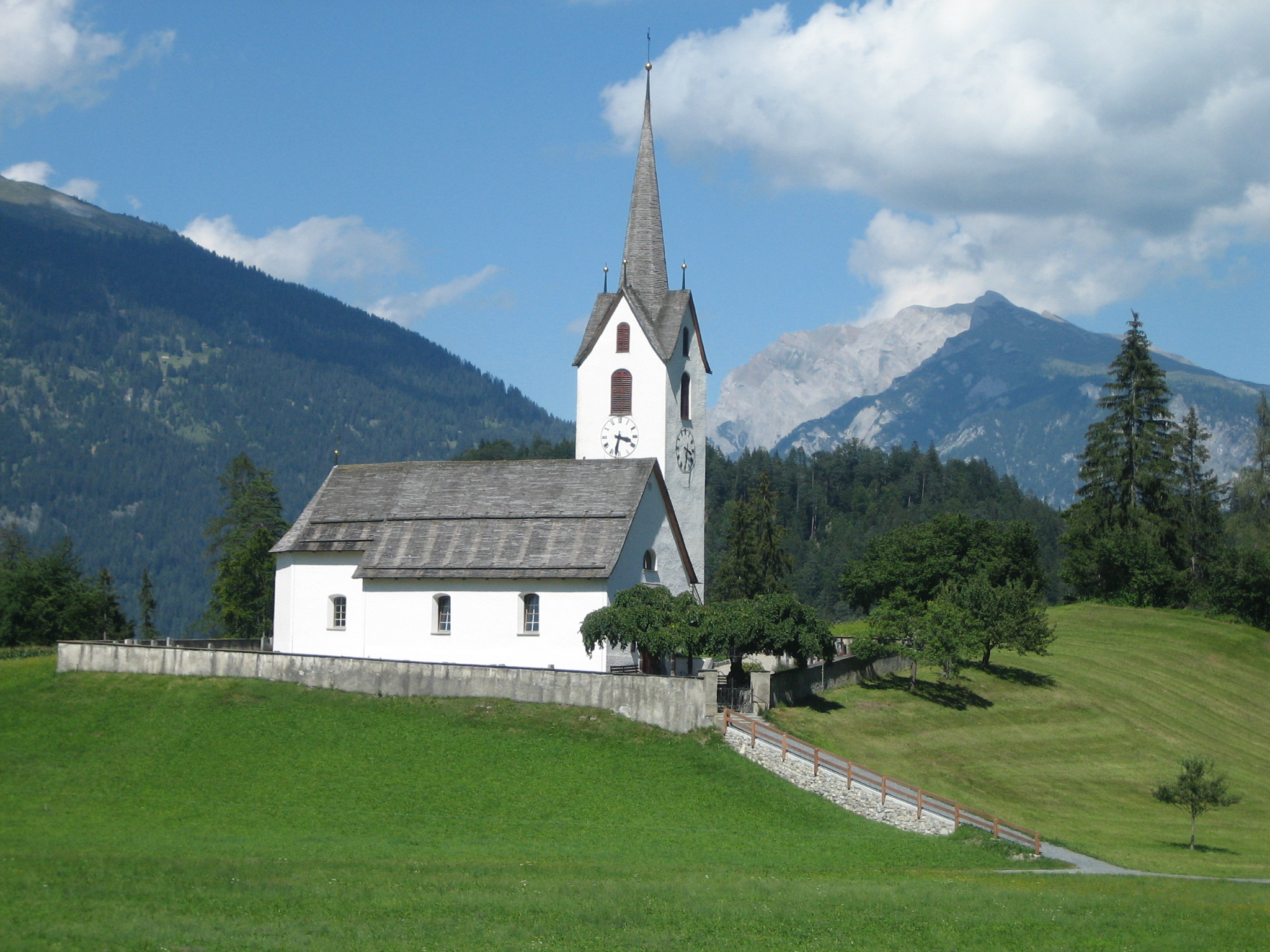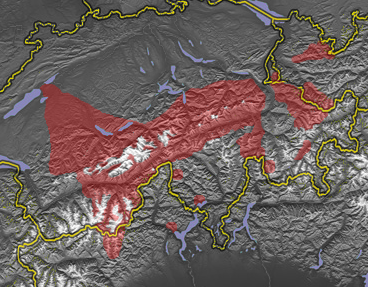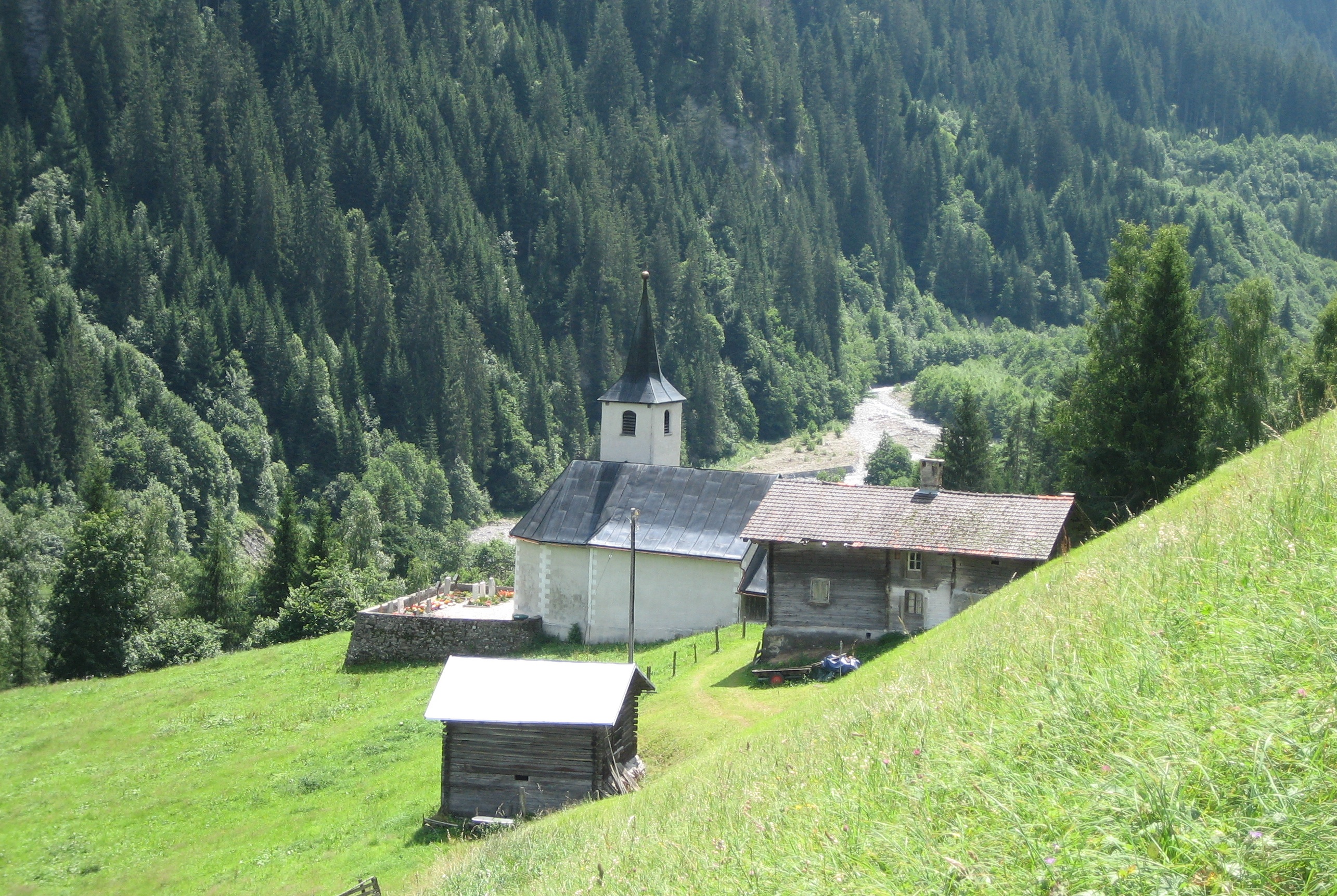|
Walser Migrations
The Walser people are the speakers of the Walser German dialects, a variety of Highest Alemannic. They inhabit the region of the Alps of Swiss Alps, Switzerland and Liechtenstein, as well as the fringes of Italy and Austria. The Walser people are named after the Valais, Wallis (Valais), the uppermost Rhône valley, where they settled from roughly the 10th century in the late phase of the migration of the Alamanni, crossing from the Bernese Oberland; because of linguistic differences among the Walser dialects, it is supposed that there were two independent immigration routes. From the upper Wallis, they began to spread south, west and east between the 12th and 13th centuries, in the so-called Walser migrations (''Walserwanderungen''). The causes of these further population movements, the last wave of settlement in the higher valleys of the Alps, are not entirely clear. Some think that the large ''Walser'' migrations took place because of conflicts with the valley's feudal lords. ... [...More Info...] [...Related Items...] OR: [Wikipedia] [Google] [Baidu] |
Bosco/Gurin
Bosco/Gurin (Walser German: ''Gurin'' / ''Guryn'', Lombard: ''Bosch'' / ''Gürin'') is a municipality in the district of Vallemaggia in the canton of Ticino in Switzerland. The village is near the end of the valley of Bosco Gurin, near the Italian border. Despite the overall prominence of Italian in Ticino, the small municipality of Bosco/Gurin is historically German-speaking. History Bosco/Gurin is first mentioned in 1244 as ''als Buscho de Quarinobis''. Until 1934, it was known as Bosco-Vallemaggia, and in German as Gurin. The village was started during Walser migration in the 13th century, with the first settlers arriving in 1244. Today the Walser German dialect is being abandoned in favour of the Italian language, and Italian speakers make up the majority in the village. Bosco/Gurin is the only municipality in Ticino where German is a co-official language. The Walser emigrated from the Val Formazza Walser around 1240 at the request of the Lombardy rulers and the ''Capitan ... [...More Info...] [...Related Items...] OR: [Wikipedia] [Google] [Baidu] |
Nufenen
Nufenen (Italian: ''Novena'', Romansh: ''Nueinas'') is a former municipality in the Viamala Region in the Swiss canton of Graubünden. On 1 January 2019 the former municipalities of Hinterrhein, Nufenen and Splügen merged to form the new municipality of Rheinwald. History Nufenen was first mentioned in 1343 as ''Ovena''. In 1633 it was mentioned as ''Nufena''. In Romansh it was known as ''Nueinas'' and it used to be known as ''Novena'' in Italian. Geography Nufenen has an area, , of . Of this area, 54.9% is used for agricultural purposes, while 14.8% is forested. Of the rest of the land, 0.9% is settled (buildings or roads) and the remainder (29.5%) is non-productive (rivers, glaciers or mountains). Before 2017, the municipality was located in the Rheinwald sub-district, of the Hinterrhein district, after 2017 it was part of the Viamala Region. [...More Info...] [...Related Items...] OR: [Wikipedia] [Google] [Baidu] |
Medels Im Rheinwald , Grisons (prior to 1943)
{{Geodis ...
Medels may refer to: *Medels im Rheinwald, a locality in the municipality of Splügen, Grisons, Switzerland *Medels im Oberland, the former name of Medel (Lucmagn) Medel () is a municipality in the Surselva Region in the Swiss canton of Graubünden. History Medel (Lucmagn) is first mentioned in 1315 as ''de valle Mederis''. Geography Medel (Lucmagn) has an area, , of . Of this area, 17.8% is used for ... [...More Info...] [...Related Items...] OR: [Wikipedia] [Google] [Baidu] |
Rheinwald
The Rheinwald (from Latin ''Rheni vallis'' meaning "Rhine Valley"; Romansh: ''Valrain'') is a valley in the Canton of Grisons in Switzerland, the first section of the Hinterrhein valley. The river Hinterrhein flows through three valleys in the Grisons, the Rheinwald, the Schams and the Domleschg. Geography The Rheinwald is about 26 km long and mainly runs from East to West. It is lined on both sides with peaks of over 3000 m high. The highest peaks are the Rheinwaldhorn (3402 m) to the West and the Pizzo Tambo (3279 m) in the South. The Hinterrhein leaves the valley at the entrance to the Rofla Gorge, which separates the Rheinwald from the Schams valley. Two mountain passes lead South from the Rheinwald: the San Bernardino Pass into Misox valley and the Splügen Pass into Val San Giacomo in Italy. The San Bernardino Tunnel (Swiss Highway A13) was opened in 1967 and stays open all winter. Mule tracks on Mount Safierberg and Mount Valserberg connect ... [...More Info...] [...Related Items...] OR: [Wikipedia] [Google] [Baidu] |
Safien
Safien is a former municipality in the district of Surselva in the Swiss canton of Graubünden. The municipalities of Valendas, Versam, Safien and Tenna merged on 1 January 2013 into the new municipality of Safiental.Amtliches Gemeindeverzeichnis der Schweiz published by the Swiss Federal Statistical Office accessed 2 January 2013 History Safien is first mentioned in 1219 as ''Stosavia''.Geography  Safien had an area, , of . Of this area, 45.6% is used for agricultural purposes, while 18.2% i ...
Safien had an area, , of . Of this area, 45.6% is used for agricultural purposes, while 18.2% i ...
[...More Info...] [...Related Items...] OR: [Wikipedia] [Google] [Baidu] |
Tenna, Switzerland
Tenna is a former municipality in the district of Surselva in the canton of Graubünden in Switzerland. The municipalities of Valendas, Versam, Safien and Tenna merged on 1 January 2013 into the new municipality of Safiental.Amtliches Gemeindeverzeichnis der Schweiz published by the Swiss Federal Statistical Office accessed 2 January 2013 History Tenna is first mentioned in 1398 as ''Thena''.Coat of arms The of the municipal is ''Gules St. Valentin cl ...[...More Info...] [...Related Items...] OR: [Wikipedia] [Google] [Baidu] |
Versam
Versam is a former municipality in the district of Surselva in the canton of Graubünden in Switzerland. The municipalities of Valendas, Versam, Safien and Tenna merged on 1 January 2013 into the new municipality of Safiental.Amtliches Gemeindeverzeichnis der Schweiz published by the Swiss Federal Statistical Office accessed 2 January 2013 History Versam is first mentioned in 1050 as ''a valle Versamia''.Geography  Versam had an area, , of . Of this area, 16.8% is used for agricultural purposes, while 70.6% is forest ...
Versam had an area, , of . Of this area, 16.8% is used for agricultural purposes, while 70.6% is forest ...
[...More Info...] [...Related Items...] OR: [Wikipedia] [Google] [Baidu] |
Valendas
Valendas is a former municipality in the district of Surselva in the canton of Graubünden in Switzerland. The municipalities of Valendas, Versam, Safien and Tenna merged on 1 January 2013 into the new municipality of Safiental.Amtliches Gemeindeverzeichnis der Schweiz published by the Swiss Federal Statistical Office accessed 2 January 2013 History Valendas is first mentioned in 765 as ''in Valendano''.Geography 
[...More Info...] [...Related Items...] OR: [Wikipedia] [Google] [Baidu] |
Safiental
Safiental is a municipality in the Surselva Region in the canton of Graubünden in Switzerland. The municipalities of Valendas, Versam, Safien and Tenna merged on 1 January 2013 into the new municipality of Safiental.Amtliches Gemeindeverzeichnis der Schweiz published by the Swiss Federal Statistical Office accessed 2 January 2013 History Valendas is first mentioned in 765 as ''in Valendano''. Versam is first mentioned in 1050 as ''a valle Versamia''. Safien is first mentioned in 1219 as ''Stosavia''. Tenna is first mentioned in 1398 as ''Thena''. Formerly inhabited by[...More Info...] [...Related Items...] OR: [Wikipedia] [Google] [Baidu] |
Vals, Switzerland
Vals (locally pronounced ) is a village and a municipality in the Surselva Region in the canton of Graubünden in Switzerland. On 1 January 2015 the former municipality of St. Martin merged into the municipality of Vals.Amtliches Gemeindeverzeichnis der Schweiz published by the Swiss Federal Statistical Office accessed 23 September 2009 History Vals Archeological finds from the around the thermal baths and Tomül pass as well as items on the slopes of the ''Valserberg' ...[...More Info...] [...Related Items...] OR: [Wikipedia] [Google] [Baidu] |
Vals Valley
The Vals Valley (german: Valser Tal) is located in the canton of Graubünden in Switzerland. Geography The Vals Valley is a roughly 16 kilometers long valley. At Uors, it branches off to the south from the Lumnezia. The valley is drained by the Valser Rhine. There are two municipalities in the valley: Vals and St. Martin. The population is spread out across several hamlets and the village of , which has an altitude of 1250 m. They form a Walser enclave, since the people in the adjacent Lumnezia speak Romansh. History Isolated finds show that the Vals Valley was used as a link between the Mesolcina and the Alpine Rhine Valley as early as the Bronze Age. The lower part of the valley was settled in the 12th Century, if not earlier. Low justice was provided by the court in Sagogn; high justice by the barons of Belmont. In the 14th century, the upper part of the valley was settled by the Walser migration. Tourism Therme Vals, the only hot spring in Graubünden where hot wat ... [...More Info...] [...Related Items...] OR: [Wikipedia] [Google] [Baidu] |




